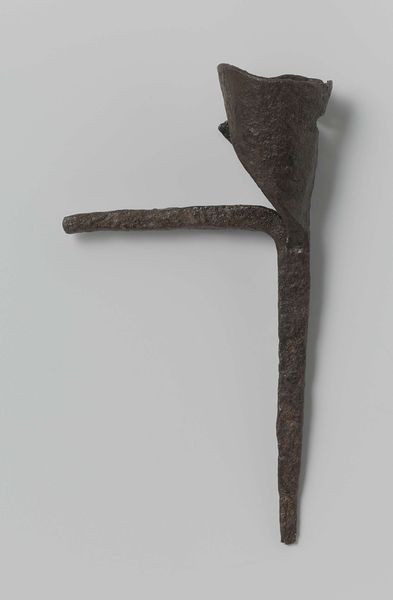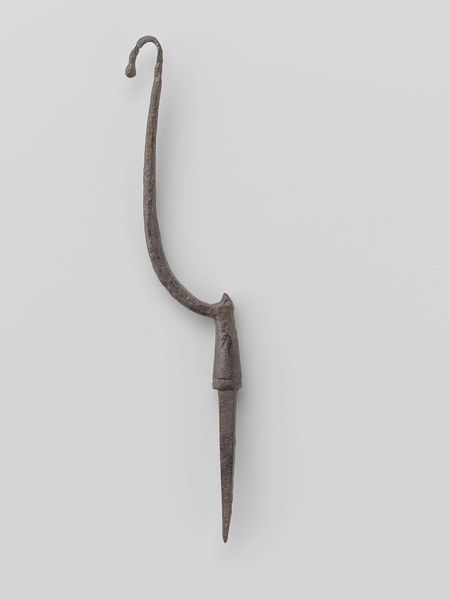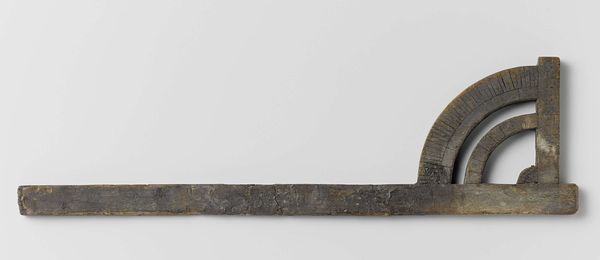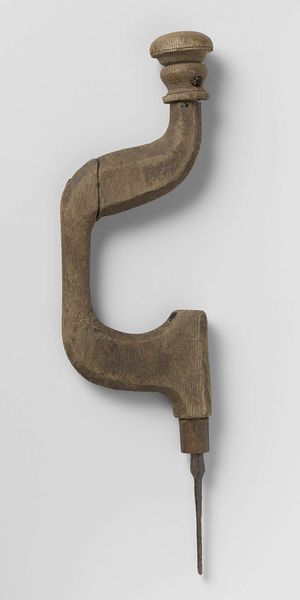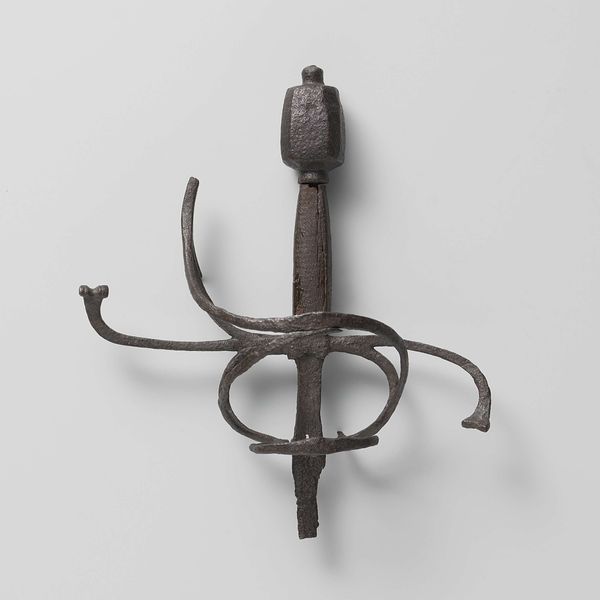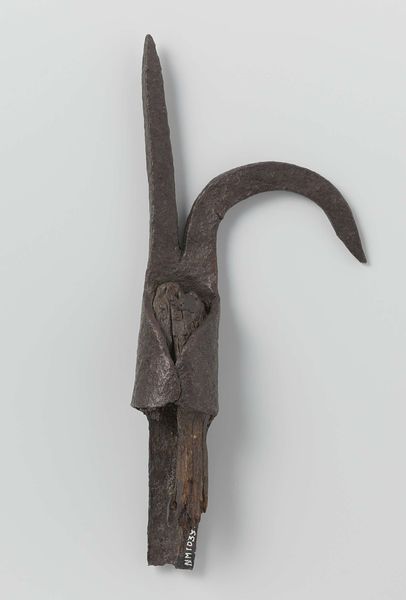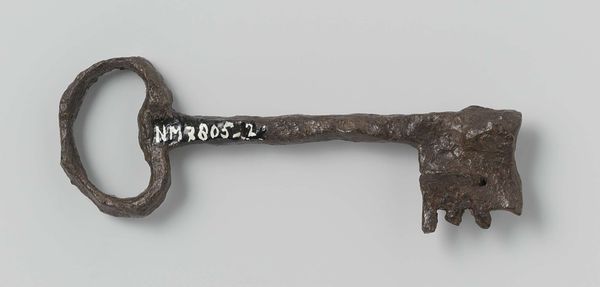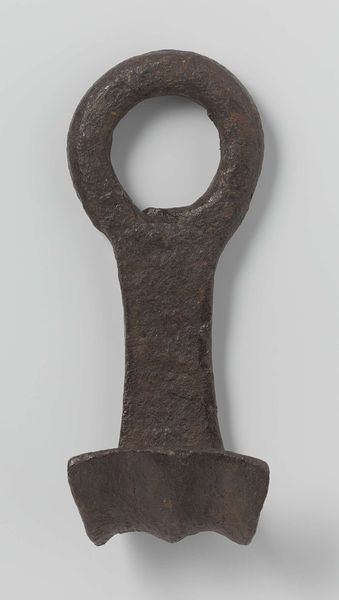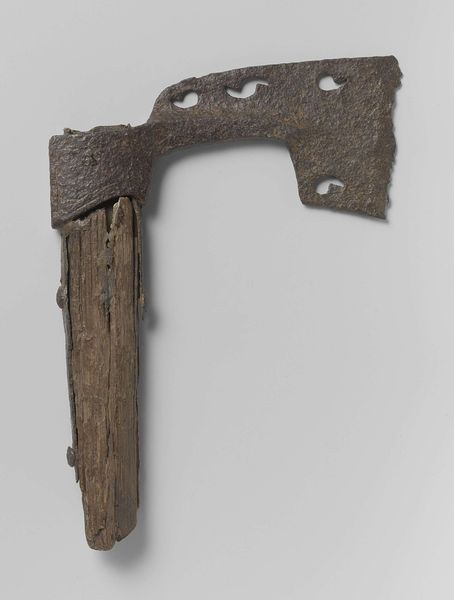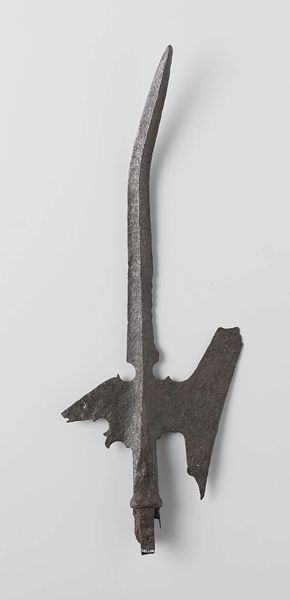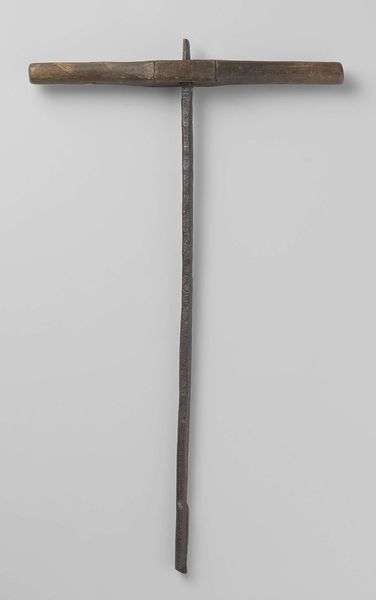
Kaarsenhouder bestaande uit een huls voor de kaars en twee loodrecht op elkaar staande pinnen c. 1590 - 1596
0:00
0:00
assemblage, metal, sculpture
#
medieval
#
assemblage
#
metal
#
sculpture
Dimensions: height 11.5 cm, width 8 cm, depth 2.4 cm
Copyright: Rijks Museum: Open Domain
Curator: This fascinating piece, housed here at the Rijksmuseum, is a late 16th-century candle holder. The work, dating back to somewhere between 1590 and 1596, comes to us from an anonymous creator, rendered in a medieval assemblage style out of simple metal components. Editor: Well, the thing that strikes me right away is how brutally functional it looks. Not much concern for aesthetics, but that strong L-shape definitely grabs the eye and creates a unique kind of symmetry. Curator: Its utilitarian aesthetic speaks volumes about daily life during that period. Candles, though essential, were still precious. Lighting wasn't something people took for granted. We have to think about this object in a broader historical context, consider the craftsmanship that would have gone into its production within specific societal structures, perhaps as a trade object or reflecting local religious traditions around light. Editor: True, the context adds a rich dimension. But let’s examine the raw materials and their interaction, which feels so primitive. The almost brutal way the two metal bars intersect really stands out—minimalist in its structure. Did the artist try to convey balance or a more sophisticated symbolism through this rough metallic aesthetic? Curator: In metalwork of the era, the materials themselves often become metaphors. The candle’s light—often equated with divine wisdom—juxtaposed against the iron evokes stark dichotomies between the sacred and profane or hints at class disparities of the time. Perhaps an interrogation of who had access to spiritual enlightenment in a world literally shrouded in darkness? Editor: Perhaps. Yet when I focus on the structure itself, the solid, almost stubborn horizontality of one bar plays off against the vertical stability of the other, really forcing your eye to move along clearly defined planes. Semiotics and structuralism highlight how such arrangements are loaded with inherent meaning irrespective of period or provenance. Curator: Exactly. By unpacking such potential narratives through object-based historical inquiry and the frameworks of cultural and feminist theory, the historical relevance becomes increasingly transparent and relevant. Editor: I appreciate the wider sociopolitical frame you apply. Still, I contend that we risk ignoring essential design considerations when these broader considerations eclipse scrutiny of the formal arrangement. The appeal remains intrinsic. Curator: Indeed, there are several interpretations at play here. I feel a dialogue of historical, cultural relevance enriches how we decode material expression and utility. Editor: An enriching exchange, illuminating, I’d say.
Comments
No comments
Be the first to comment and join the conversation on the ultimate creative platform.
